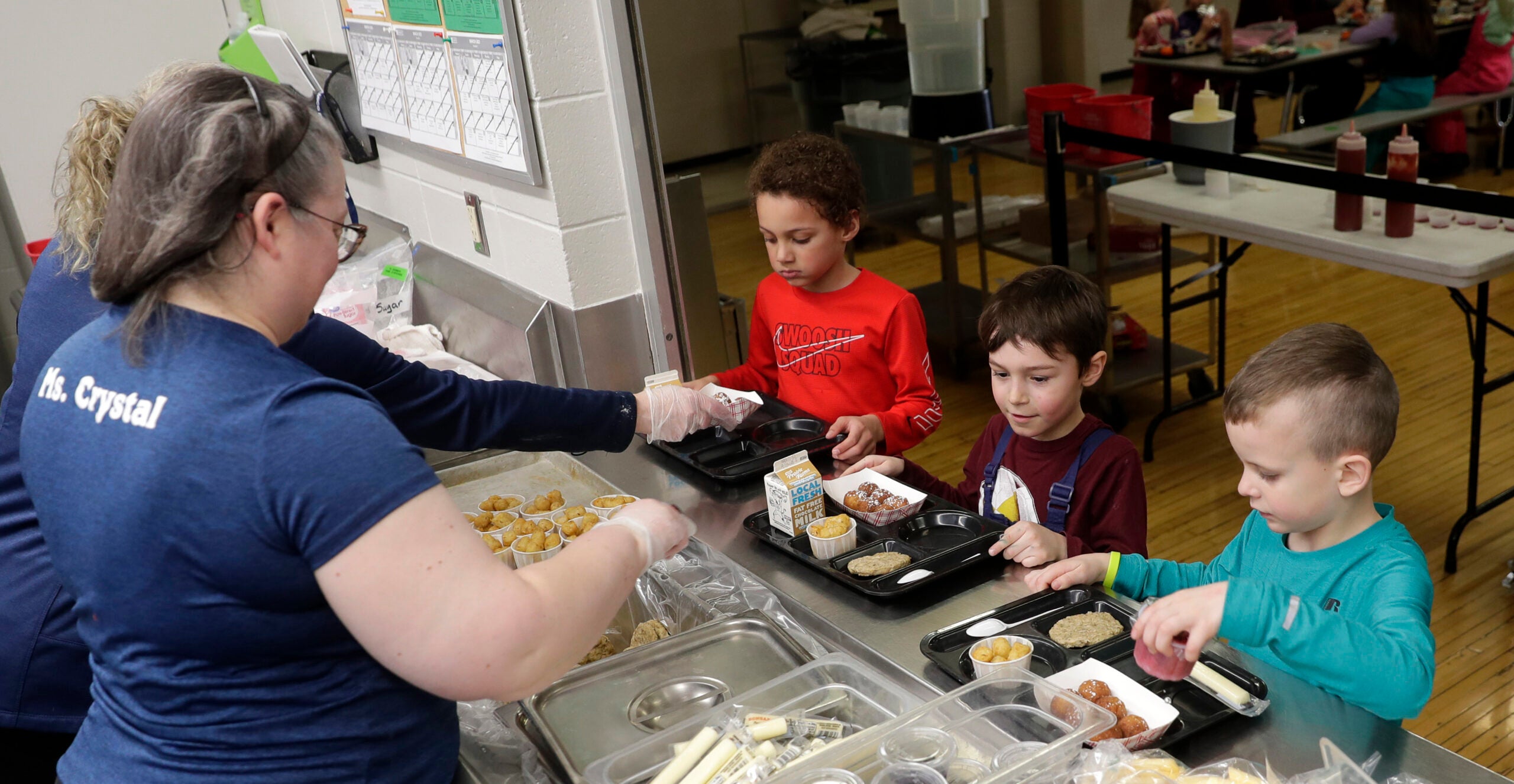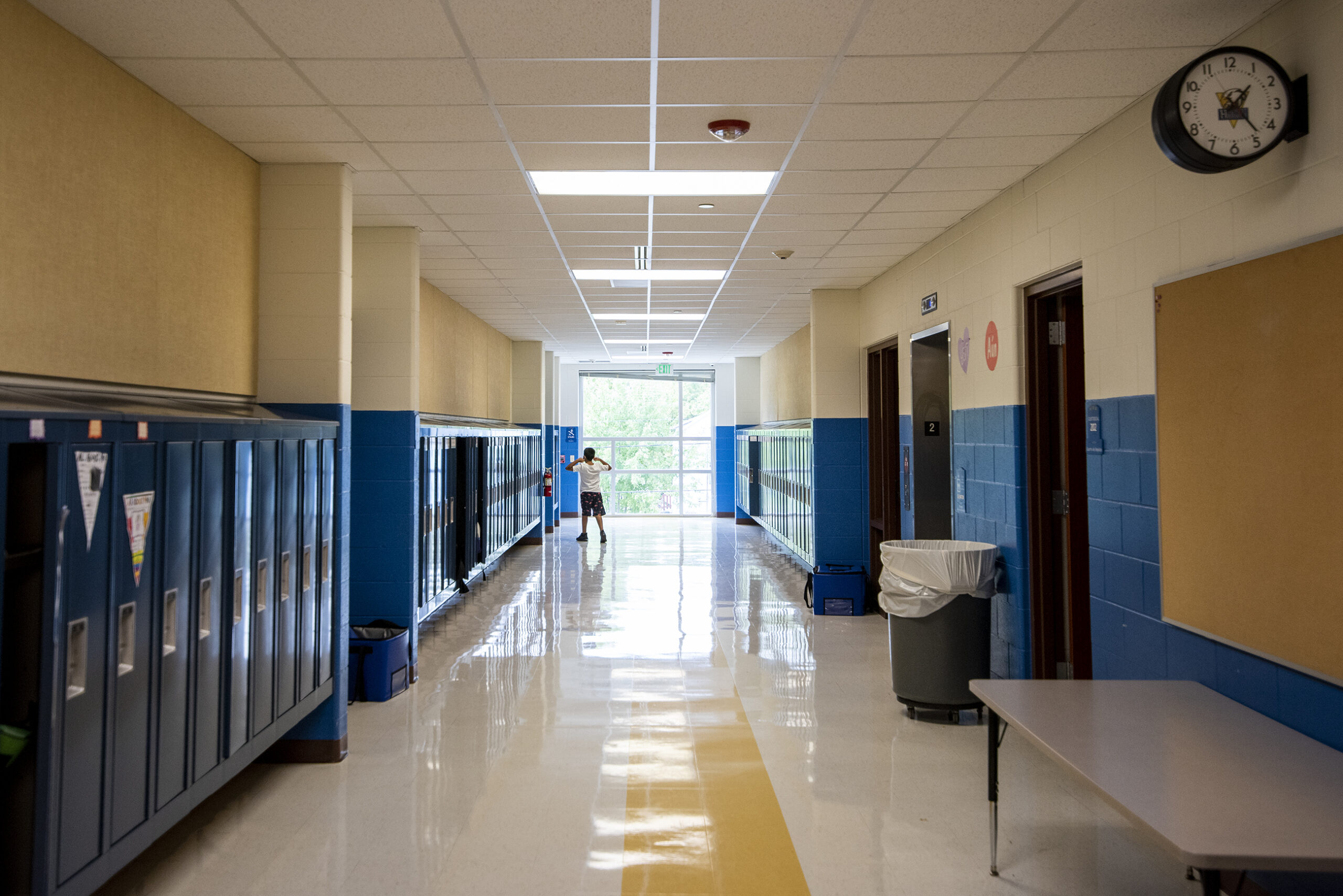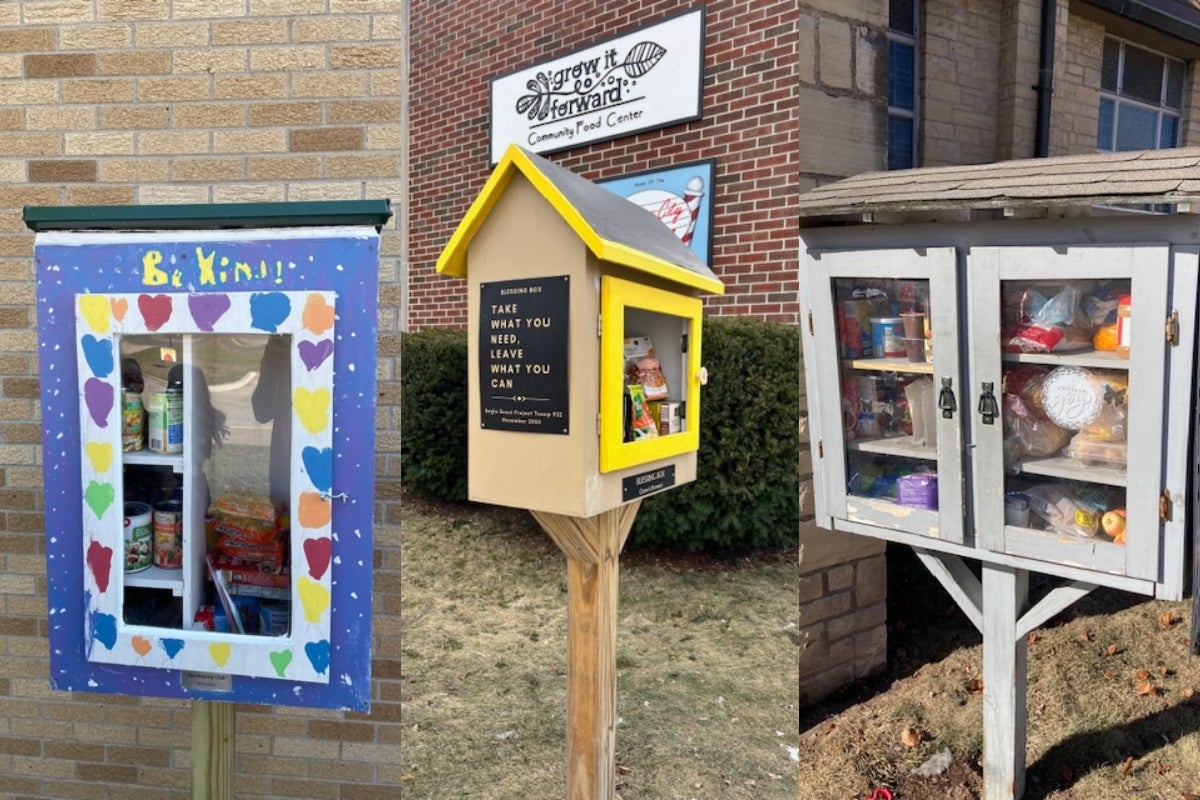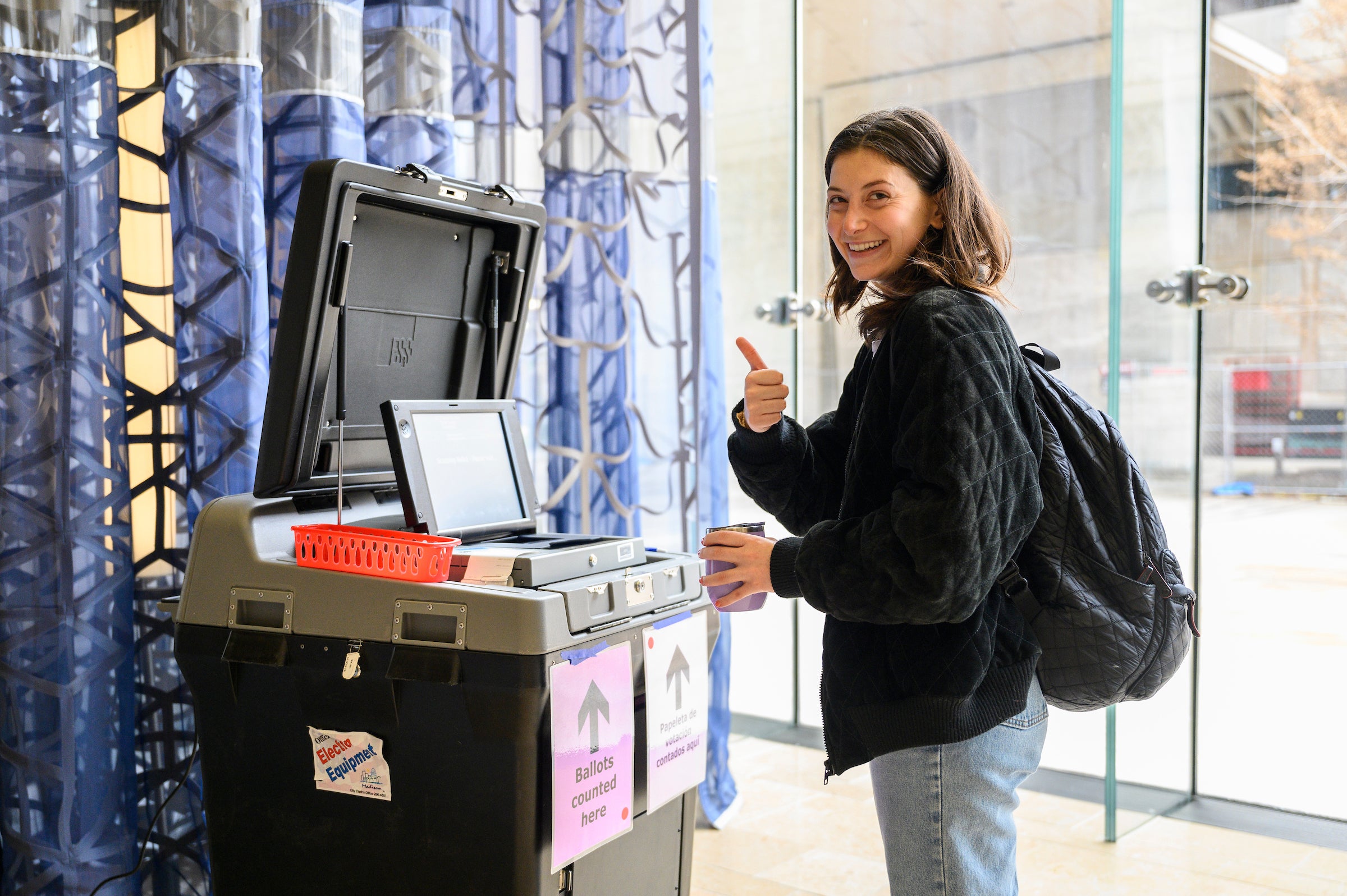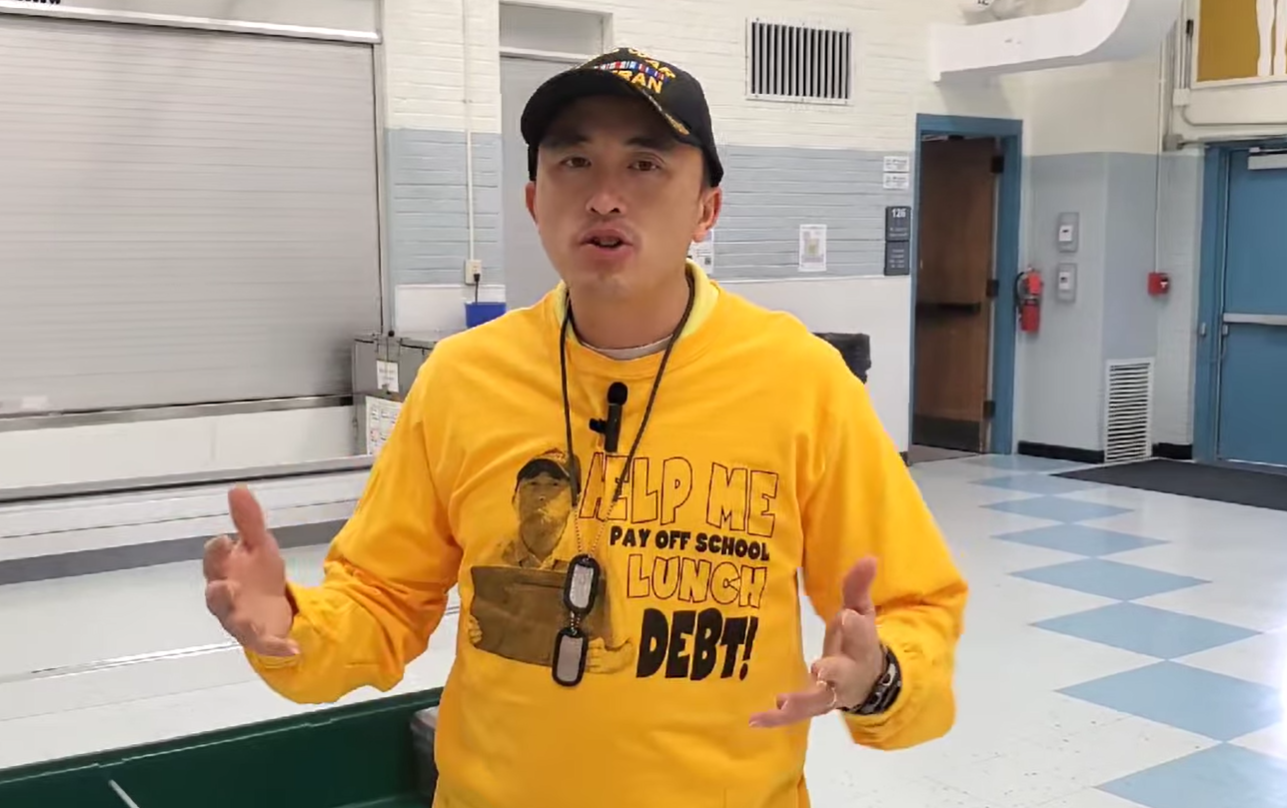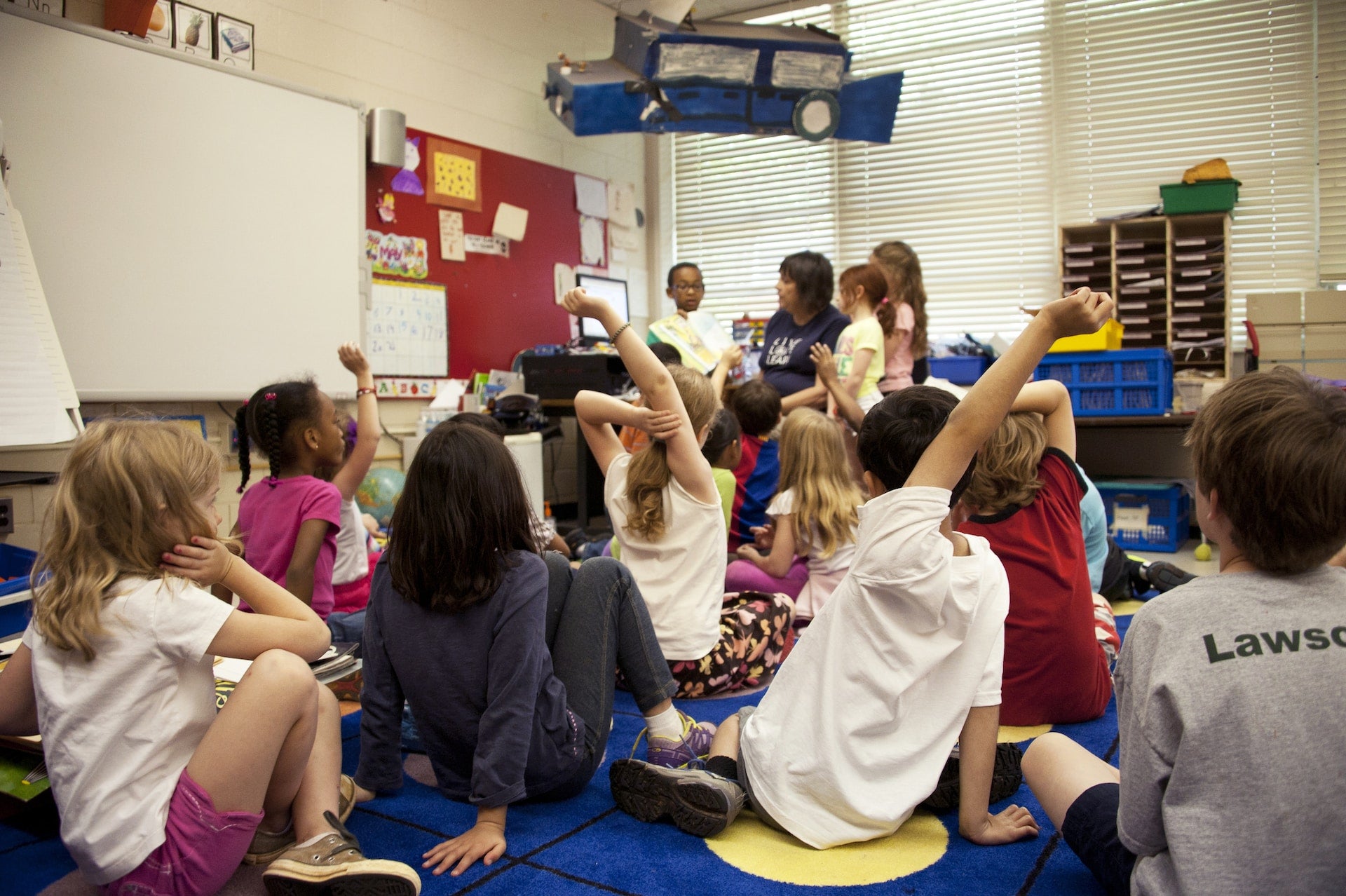Every week, Angela Price goes to the grocery store with a strict plan.
With her list, she strategically shops the isles at Walmart and Pick ’n Save, trying to make sure she’s getting the best deal on food for herself and her 11-year-old son, Oliver.
And every week, the price of food keeps going up.
Stay informed on the latest news
Sign up for WPR’s email newsletter.
“Grocery money, I think, is probably my biggest financial stress that I have right now,” Price said.
Like many parents, Price wakes up early during the week to make breakfast, prepare herself for work and get Oliver ready for school. She also packs him a lunch — something parents didn’t have to do a year ago.
In 2020, lunch was free for all students nationwide at schools that opted into a federal assistance program to offset some of the pressures of COVID-19.
At the beginning of the 2022-23 school year, that federal aid ended and schools reverted back to the old system — a system that requires caregivers to fill out an annual form with their income to see if their child qualifies for a free or reduced price option.
Otherwise, kids may bring a lunch, pay for school lunch or, in some cases, not eat.
And kids are going hungry. One Green Bay teacher said she notices more kids not eating at lunchtime because the universal free lunch program ended.
The end of the program left families struggling to feed their kids and school nutrition departments underfunded as they navigate higher food costs, supply chain issues and families who can’t pay.
About 1 in 8 children face hunger in Wisconsin, according to Feeding America, and research shows that hunger can lead to lower academic performance and developmental delays.
That pandemic-era lunch program was a glimpse at a possible future for the American education system: feeding all kids at school for free, no matter their income.
Wisconsin might bring it back.
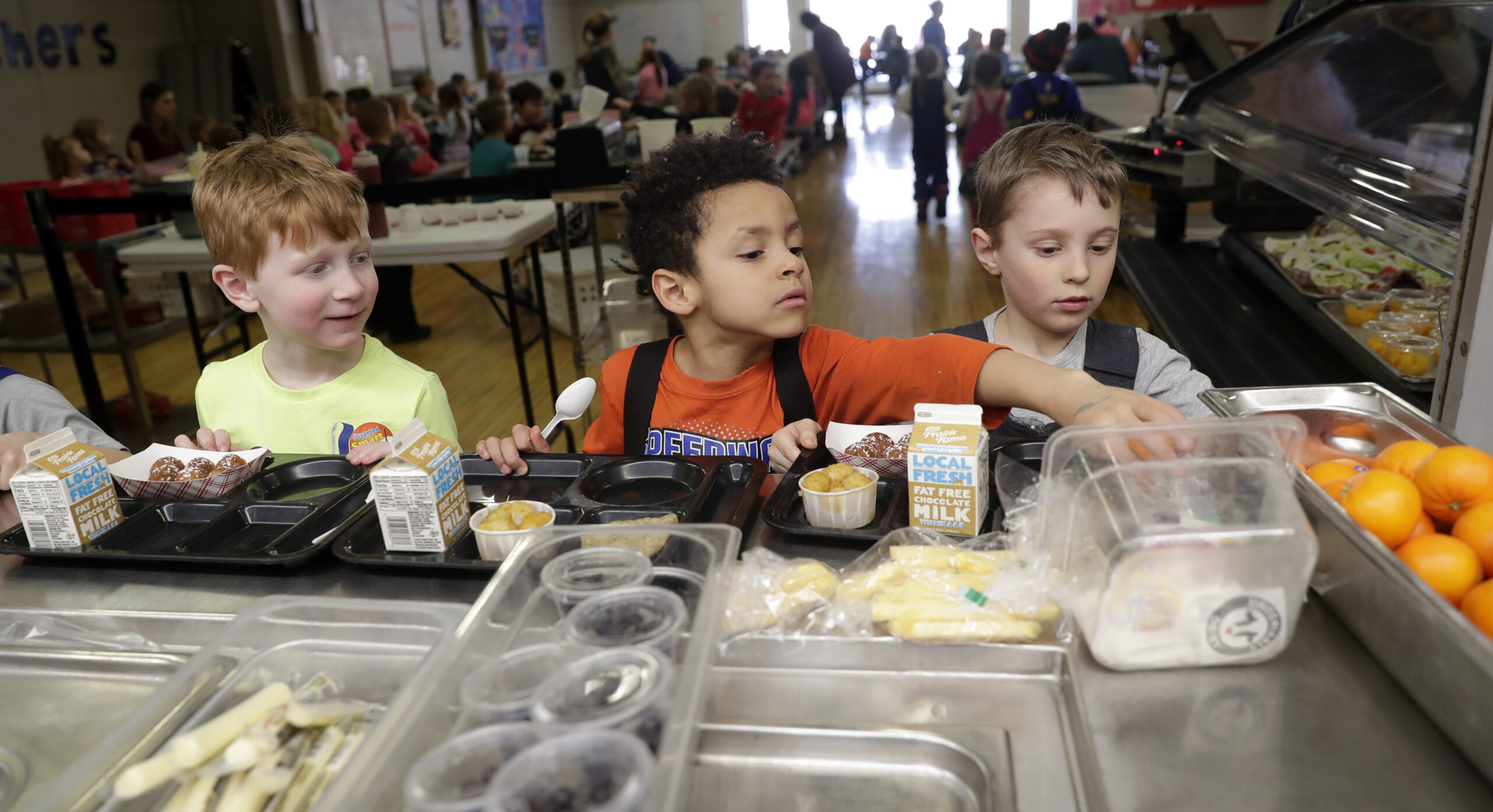
Having a low income doesn’t guarantee free lunch; even $5 can disqualify you
To qualify for free or reduced price school lunch, families have to apply every year and show they make less than the annual or monthly income thresholds set by the federal government.
Even if a family makes just a few dollars more, their application is denied, meaning lots of families fall through the cracks.
Caitlin Harrison, the president of the School Nutrition Association of Wisconsin and the director of food service at the Elmbrook School District ― a district west of Milwaukee that serves Brookfield, Elm Grove and part of New Berlin ― had to deny a family at the beginning of the school year because they made $5 more than the cutoff.
“That’s heartbreaking, right? Because you know that they need it, but unfortunately there’s checks and balances and things that we have to follow to keep our programs sound,” she said.
Price makes about $300 more a month than the federal limit to qualify, so she didn’t apply because she knew she would be denied. So, she just packs Oliver a lunch.
According to the federal guidelines, a family of two, like Price’s, would need to make less than $2,823 a month before taxes — $33,874 a year — to qualify for reduced lunches. To qualify for free lunches, that would be a gross monthly income of $1,984 or $23,803 annually.
While Price is a few hundred dollars over the income threshold, the price of groceries keeps going up. Food was 10 percent more expensive in January 2023 than it was in January 2022.
Price even considered getting another job to help compensate.
“I was like, ‘I’m going to have to get a second job just for food,’” she said. “I was at the point where it was all on credit cards, and I was racking up a lot of debt, and it was all groceries.”
Districts may feed kids who have no lunch money, but that may lead to negative account balances
What happens when a child shows up in the lunch line, hasn’t qualified for free or reduced lunch but can’t pay? It’s up to the district to decide.
Districts can decide to not feed the child or to give them an alternative meal instead. Some districts — like Elmbrook, Appleton and Green Bay — feed kids anyway, even when that means their school meal accounts go negative.
The Green Bay School District’s negative lunch account balances totaled $343,208 at the end of the 2018-19 school year, the last full school year that wasn’t interrupted by the pandemic or supported by federal universal free school lunch.
As of the end of February, that negative balance has gone down to $90,000.
In Appleton, the district’s total negative lunch balance was $55,000 in 2019; at the end of the 2022 school year, it was down to $225.
The Sheboygan Area School District is participating in a program that provides free meals districtwide, and its negative balance as of February was $25,000.
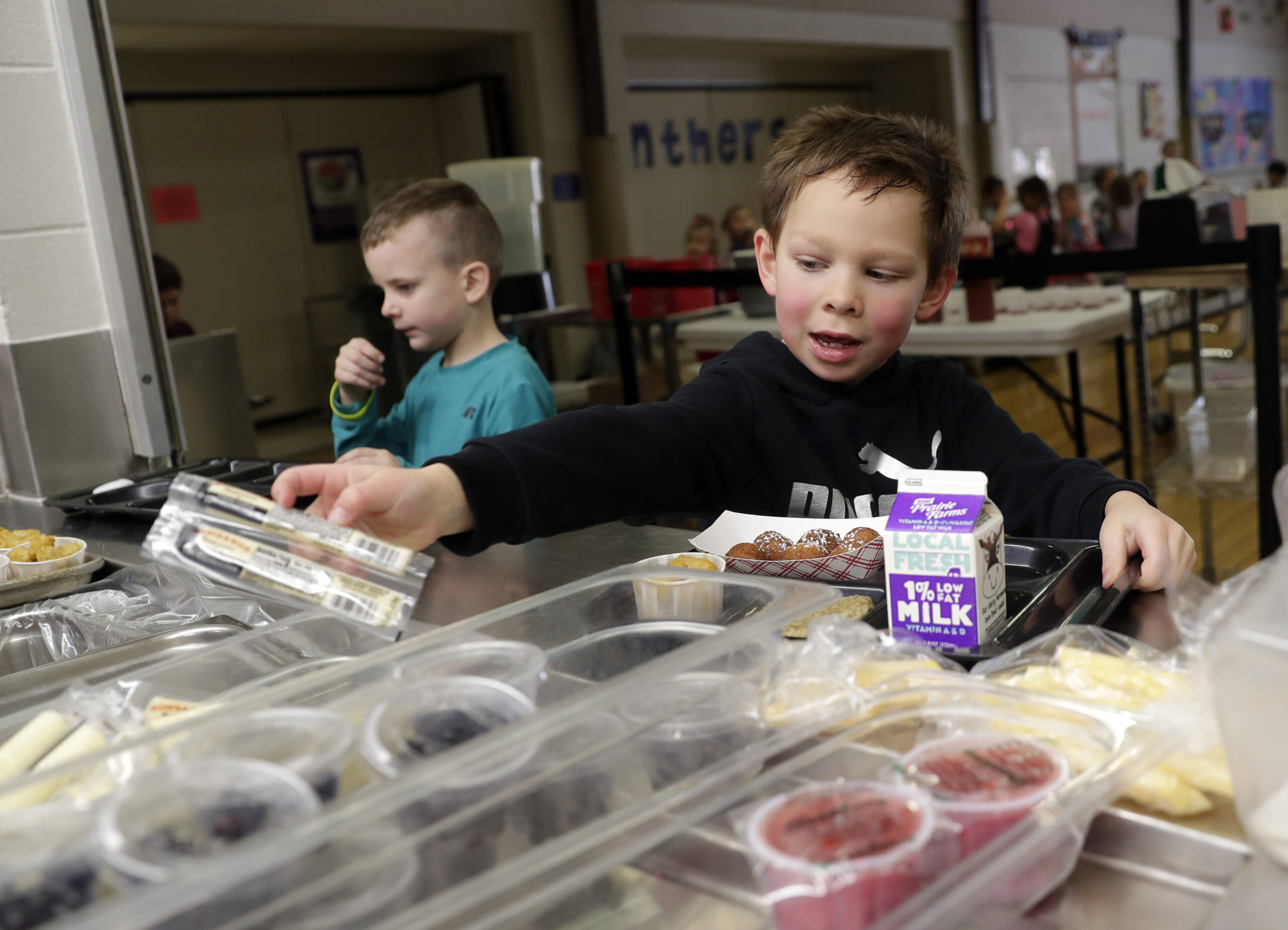
Even where there is free lunch, the rules are strict and hard for kids to follow
Students can automatically qualify for free lunch if their family is also taking part in another assistance program such as the Supplemental Nutrition Assistance Program, or SNAP.
While universal free school lunch is not a reality for all students in Wisconsin, there is a federal program that gives specific schools that option. The Community Eligibility Provision, or CEP, automatically gives all students a free breakfast and lunch at school if more than 40 percent of the student population receives some other state or federal assistance.
The Milwaukee Public School District and Sheboygan Area School District participate in the CEP program, as do about half of the schools in the Green Bay School District.
Oliver goes to one of the CEP schools on Green Bay’s east side where breakfast and lunch is free.
But as Price put it, it’s hard to tell an 11-year-old how to work within the guidelines.
Meals are only free under the federal program if they are “complete.” Students must get three of the five lunch components ― a grain, protein, milk, fruit or vegetable ― for it to be reimbursed by the federal government. One of the components must be a fruit or vegetable.
If a child gets only part of that meal or adds other items, it isn’t covered by the federal program.
“At this point, I just got to pack the lunch. I’m broke either way. If he went and bought a la carte items, I mean, it’s like the same thing,” Price said. “I’m just going to pack him stuff and know that what he’s eating is healthy and that it’s the stuff that he’ll like and not be wasteful about.”
At East High School in Green Bay, María Abundíz Campos, a bilingual social worker, had a student who qualified for free lunch but kept getting charged.
She went through the lunch line with him to see why, and discovered he was getting more food than is covered by the free meal.
“My student was getting two slices of pizza or sometimes a slice of pizza and something else and something else and something else. And he told me, ‘Well, I take more than one piece because this is not enough for me,’” she said. “And I felt terrible because I was like, ‘Well, (if) you’re going (to) be doing that, you have to pay.’”
Abundíz Campos keeps a basket of granola bars and other snacks for students in her office. Every day she fills it up ― sometimes twice ― because students are hungry.
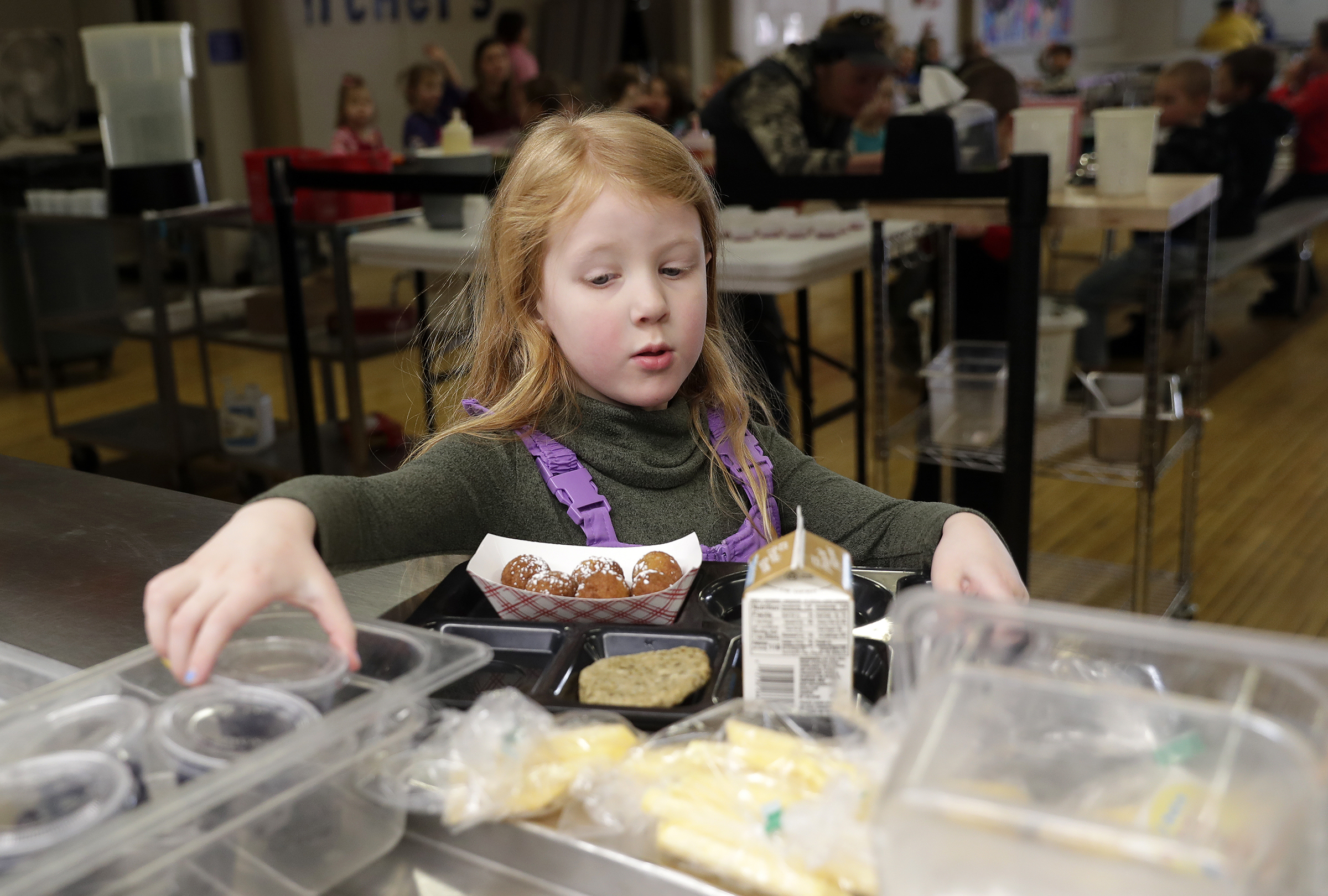
School food service departments struggle to stay afloat, but universal free lunch could help solve that
The pandemic-era free lunch program not only fed kids for free, but it provided school nutrition departments with a more reliable funding source. Some food service departments are in the red by tens of thousands of dollars because of negative student meal balances.
Most food service departments are self-funded, meaning they make money based on how many meals are sold.
“We’re basically a large restaurant,” Harrison said. “There’s no guarantee that people are going to show up at breakfast or lunch. There’s no guarantee that you’re going to serve X amount of meals a day.”
When meals were free, schools were reimbursed for all meals they sold, not just those served to low-income students. This helped departments budget better and navigate supply chain challenges because they could afford to buy locally, Harrison said.
It was also a time when food service workers didn’t have to act as debt collectors.
“The access to food is always top of mind for anybody who works in food and nutrition in a school district, but I think what the last two years have shown us is that we can see kids and not ask questions about their eligibility,” Harrison said. “… And that puts our staff in an incredibly difficult position to have to ask a kindergartner or first-grader, ‘Do you have lunch money?’ And I get a little emotional about it because it’s so upsetting that our employees would have to do that.”
Wisconsin might join other states and bring back free meals
While free meals for all ended at the federal level, a few states — Colorado, California, Minnesota and Maine — have taken matters into their own hands and passed laws to fund free food for students at the state level.
Wisconsin has not, but that doesn’t mean it’s off the table.
Gov. Tony Evers is seeking $120 million in his state budget proposal to fund free breakfast and lunch for all Wisconsin students in public, private and charter schools, making up what isn’t covered by the federal government.
Rep. Kristina Shelton, D-Green Bay, has been working to get free school meals passed in Wisconsin for nearly two years. As a former physical education and health teacher, the issue is close to her heart.
During the Legislature’s last session, Shelton introduced a bill to provide free school meals, but it never got a committee hearing. Shelton is working alongside the Healthy School Meals for All coalition, a group of school and community advocates, to push for legislative action on free school meals.
Shelton “absolutely” plans to reintroduce the bill if Evers’ proposal is cut from the state budget, but her Republican colleagues might not be on board.
Sen. Eric Wimberger, R-Green Bay, previously questioned the need for free school meals on social media.
“Well, the idea of free or reduced cost lunch is to help people who can’t afford it,” he told the Press-Gazette. “The person obligated to take care of you is your parents, and these sort of needs-based programs are supposed to be because of needs.”
Shelton thinks it’s possible there will be movement on free school meals this year, citing a “noticeable shift in the conversation” around school meals.
“Yes, it’s good for kids, but it’s also good for working families. It’s good for farmers and growers, and it’s a local investment in local economies. Those messages were coming through,” she said.
This story is part of the NEW (Northeast Wisconsin) News Lab’s fourth series, “Families Matter,” covering issues important to families in the region. This year, reporters from six news outlets — Green Bay Press-Gazette, Appleton Post-Crescent, Wisconsin Public Radio, Wisconsin Watch, The Press Times and FoxValley365 — will spotlight the daily struggles families face, dig up solutions and options, and explain why these topics impact not only families, but the whole state.
Danielle DuClos is a Report for America corps member who covers K-12 education for the Green Bay Press-Gazette. Contact her at dduclos@gannett.com. Follow on Twitter @danielle_duclos. You can directly support her work with a tax-deductible donation at GreenBayPressGazette.com/RFA or by check made out to The GroundTruth Project with subject line Report for America Green Bay Press Gazette Campaign. Address: The GroundTruth Project, Lockbox Services, 9450 SW Gemini Drive, PMB 46837, Beaverton, Oregon 97008-7105.
